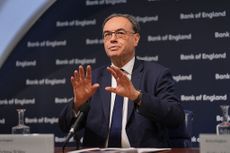Economy
The latest news, updates and features on the UK economy and other global economic stories from the expert team at MoneyWeek.
Explore Economy
-

My market predictions for 2026
Opinion My 2026 predictions, from a supermarket merger to Dubai introducing an income tax and Britain’s journey back to the 1970s
By Matthew Lynn Published
Opinion -

Will UK interest rates fall in 2026? Latest Bank of England predictions
The Bank of England cut interest rates to 3.75% in December, bringing the base rate to its lowest level since February 2023. But will we see more cuts in 2026?
By Daniel Hilton Last updated
-

Key money dates for 2026
We run through the key dates and big money changes coming up in 2026 that could affect your financial health
By Sam Walker Last updated
-

The steady rise of stablecoins
Innovations in cryptocurrency have created stablecoins, a new form of money. Trump is an enthusiastic supporter, but its benefits are not yet clear
By Bruce Packard Published
-

Goodwin: A superlative British manufacturer to buy now
Veteran engineering group Goodwin has created a new profit engine. But following its tremendous run, can investors still afford the shares?
By Jamie Ward Published
-

Is US stock market exceptionalism over?
US stocks trailed the rest of the world in 2025. Is this a sign that a long-overdue shift is underway?
By Cris Sholto Heaton Published
-

Modern Monetary Theory and the return of magical thinking
The Modern Monetary Theory is back in fashion again. How worried should we be?
By Simon Wilson Published
-

Metals and AI power emerging markets
This year’s big emerging market winners have tended to offer exposure to one of 2025’s two winning trends – AI-focused tech and the global metals rally
By Alex Rankine Published
-

King Copper’s reign will continue – here's why
For all the talk of copper shortage, the metal is actually in surplus globally this year and should be next year, too
By Alex Rankine Published
